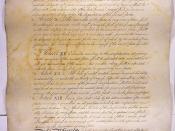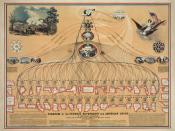When the constitution was established in 1787, it formed the very foundation of the United States government. The constitution gave more power to the national government than the Articles of Confederation. The constitution and the articles of confederation have very many differences. The articles of confederation have no executive branch, but the constitution does. There was no power to tax, in the articles of confederation. In the constitution we have the federal tax system. The constitution has done many things, one of the things it did was created the separation of powers.
The articles of confederation have no executive branch. There was no independent executive and no veto of legislation. Judicial proceedings in each state were to be honored by all other states. The federal government had no judicial branch, and the only judicial authority Congress had was the power to work out disputes between states. Congress was denied the power to levy taxes; the new federal government was financed by donations from the states based on the value of each state's lands.
Any amendment to the articles required the unanimous approval of all 13 states. The constitution has an executive branch. When the Founding Fathers created our system of government, they created three branches, which were separate but worked together. The Legislative Branch, which makes laws and consists of the two houses of Congress (The House of Representatives and the Senate), the Judicial Branch, which enforces and interprets laws, and the Executive Branch (The President of the United States).
The problem of the Articles of Confederation was that it limited the power to central government. This meant that the congress had no power to tax. The congress gave all the authority to the states over and left it with no power over the nation's economic affairs. The...


